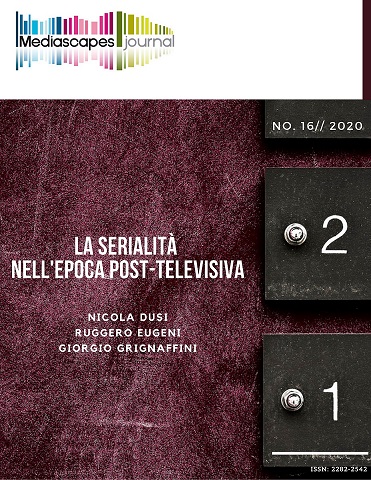I discorsi d’odio online in una prospettiva comunicativa: un’agenda per la ricerca
Parole chiave:
Hate Speech, discorsi d’odio online, social media, web affordance, pratiche comunicativeAbstract
The phenomenon of hate speech has become a predominant component of public debate and a point of great interest in academic research. Plenty of studies investigating the various expressions of hate speech, including online hate speech, have been conducted. Despite the efforts made, however, the outlines of this phenomenon remain extremely uncertain. In fact, limitations in the intention to reduce hate speech to a purely legal approach is emerging. Even though the latter was originally the dominant approach, it appears to be inadequate for capturing a fluid and ever-changing phenomenon such as the hate speech today. Despite the similarities with offline hatred, online hatred has widened to include the most diverse expressions, messages, and hostility practices, which can be either organized or individual, and often implicit. All these features proper of the online hate speech make it difficult to establish, according to the specific circumstances, whether these are forms openly aimed at inciting hatred and violence against target groups likely to harm victims. Nonetheless, distinguishing the different roles of the actors involved into the spread of hate speech (e.g. perpetrators of online speech, more or less aware spreaders of hate, victims) can be a source of uncertainty. Building on this foundation, the article aims to investigate hate speech of today’s world through a multidimensional framework fit into the context of hybrid media. Moving from Lasswell (1948)’s Communication Model, this contribution illustrates the importance of observing all the dimensions involved in hate speech, including the communicator, the message, the receiver, considering as well the digital media’s context and the related specific properties, and the consequences arising from the interaction between the different dimensions. The idea behind this proposal is that in order to understand both mechanisms and hallmarks of ordinary online hate practices, it is necessary to move away from specific and fragmented approaches. These, indeed, (selectively) analyse specific portions of the phenomenon while losing sight of other dimensions’ roles and their action and feedback relations. The transformative nature of hate speech requires the adoption of an innovative approach, which cannot be limited to the compilation of a list of examples and cases to be banned. On the contrary, it should aim for tuning in to cultural and digital practices used by users in the production of hate speech. Because, if it is true that online hate does not differ from hate tout court, it is also true that progressive communicative shifts might occur and lead to the transformation of forms of discrimination into something apparently harmless such as “just funny stuff”.
##submission.downloads##
Pubblicato
Come citare
Fascicolo
Sezione
Licenza
Gli autori che pubblicano su questa rivista accettano le seguenti condizioni:
- Gli autori mantengono i diritti sulla loro opera e cedono alla rivista il diritto di prima pubblicazione dell'opera, contemporaneamente licenziata sotto una Licenza Creative Commons - Attribuzione che permette ad altri di condividere l'opera indicando la paternità intellettuale e la prima pubblicazione su questa rivista.
- Gli autori possono aderire ad altri accordi di licenza non esclusiva per la distribuzione della versione dell'opera pubblicata (es. depositarla in un archivio istituzionale o pubblicarla in una monografia), a patto di indicare che la prima pubblicazione è avvenuta su questa rivista.
- Gli autori possono diffondere la loro opera online (es. in repository istituzionali o nel loro sito web) prima e durante il processo di submission, poiché può portare a scambi produttivi e aumentare le citazioni dell'opera pubblicata (Vedi The Effect of Open Access).


